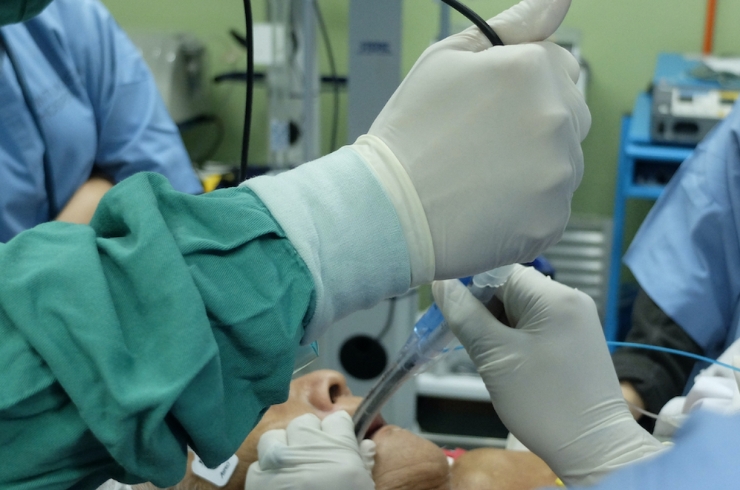Bronchoscopy

Bronchoscopy – A Key Diagnostic and Therapeutic Procedure in Pulmonology
Bronchoscopy is a medical procedure used to visualize the inside of the airways and lungs using a thin, flexible tube called a bronchoscope. This tool is equipped with a light source and a camera, allowing pulmonologists to directly observe the trachea, bronchi, and bronchioles. Bronchoscopy serves both diagnostic and therapeutic purposes, making it a vital procedure in the evaluation and management of various respiratory conditions.
One of the primary uses of bronchoscopy is to investigate the cause of persistent cough, coughing up blood (hemoptysis), wheezing, or abnormal chest X-rays or CT scans. Through bronchoscopy, doctors can detect abnormalities such as tumors, inflammation, infections, foreign bodies, or airway obstructions. It also allows for tissue sampling, such as biopsies or bronchoalveolar lavage (BAL), which are essential for diagnosing infections like tuberculosis, lung cancer, and interstitial lung diseases.
In addition to its diagnostic value, bronchoscopy has a significant therapeutic role. It is often used to remove foreign bodies lodged in the airways, clear mucus plugs, or place stents in narrowed airways due to tumors or scarring. Bronchoscopy can also be used to deliver medications directly to the lungs, especially in cases of localized infections or inflammation.
There are two main types of bronchoscopies: flexible bronchoscopy and rigid bronchoscopy. Flexible bronchoscopy is more commonly performed, usually under local anesthesia with mild sedation. It is less invasive and well-tolerated by patients. Rigid bronchoscopy, which requires general anesthesia, is typically reserved for situations where a large foreign body needs removal or when there’s a significant airway obstruction.
Before undergoing bronchoscopy, patients are advised to avoid eating or drinking for several hours. The procedure is generally safe, though minor side effects like a sore throat, cough, or mild bleeding can occur. Serious complications are rare but can include infection, pneumothorax (collapsed lung), or significant bleeding.
In conclusion, bronchoscopy is an indispensable tool in respiratory medicine. It provides a direct and detailed view of the airways, enabling early diagnosis, precise treatment, and effective management of numerous lung conditions. Its versatility and minimal invasiveness make it a cornerstone procedure in modern pulmonology.